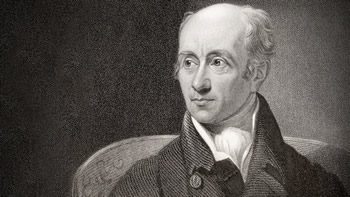Clementi’s Selection of Practical Harmony vol 1: Muzio Clementi
Edited by Andrea Coen.
Ut Orpheus MC52.1 £70.50
Available through: www.utorpheus.com

Muzio Clementi (1752-1832) is well known today for his many virtuosic piano compositions, but in 1801 he published the title under review “for the Organ or Piano Forte” in four volumes, amounting to over 200 pieces including “Voluntaries, Fugues, Canons & other Ingenious Pieces by the most Eminent Composers” volume one of which has now been edited by Andreas Coen and published in a modern edition by Ut Orpheus as volume 52 part 1 of the composer’s complete works. The opening seven pages of Volume I are devoted to the “Epitome of counterpoint” with some 50 examples of simple, florid and double counterpoint from Fux, Palestrina, Kirnberger and Martini. This is followed by 62 pieces of music by some 20 different 18th century composers, most of which are fugal in from two to four voices and of various length and tempi, and suitable to either organ oir stringed keyboard instruments, but there are also some preludes and dance movements.
Most of the composers will be well known, but some of those whose contribution is of just one fairly substantial piece will probably not be - for example Joseph Umstatt, whose Voluntary - short and fairly free - and Fuge – based on sequential pattern - in G minor will repay study, and Johann Ernst Bach, whose Fantasia and Fuga in F, with alternating free and stricter, barred sections in the Fantasia followed by a well constructed fugue, also offers much of interest. Two Minuets by C.P.E Bach are from a collection primarily for stringed keyboard instruments and another Minuet with its trio is found in Symphony 44 by Haydn. A Fuga a 3 Voci by Giacomo Perti and a Fuga a 3 Voci on 2 subjects one of which is the ascending and descending scale covering an octave in semibreves, by Cristoforo Caresana are short, but not without some merit as are six predominantly two-voice Fugatos by Niccolò Porpora taken from his violin sonatas. There are six didactic Canons, in 2 voices by Charles Fasch, Giovanni Martini and C.P.E Bach - two pieces, one longer in binary form, and in four voices by Francesco Turini and Paolo Agostini de Vallerano.
Among longer pieces by better known composers is a fairly short alla breve Fughetta by Georg Telemann, and nine artfully constructed Fugues by Johann Albrechtsberger, one of which is based on the ascending and descending hexachord, taken from various collections he published. 13 pieces by Johann Kirnberger, several of which are didactic in purpose, are mainly fugal, two on the same subject “variously treated” are entitled Voluntary. Also by him there is a Gavotte, a Polonoise, a Fuga and Polonoise, and a Preludio and Fuga. The Fugas are taken from his print of Huit Fugues or le clavecin ou l’orgue of 1778. Numbers 1, 3-6 taken from the well wrought IX Toccate e Fughe per l’organo published in ca. 1747 by Johann Eberlin are here entitled Voluntaries and Fugues. Eight pieces by C.P.E Bach, include four quite substantial and rewarding Fugas, one marked allegro di molto in G minor with much sequential writing being preceded by a free Fantasia, far more suited to the clavichord. A fine Fuga in A of 125 bars is preceded by a separate piece, also in A, entitled Voluntary, but they make a good pair. A two voice moto perpetuo Fuga in D minor requires concentration. A Voluntary in F minor (actually a binary form sonata movement from the Exempel nebst 18 Probestuecke for stringed keyboard instruments) is followed by a Fuga a 3 in F major. J.S.Bach is represented by the Pièce d’orgue BWV572– here entitled Preludio - and the French Suite in G for stringed keyboard instruments, its movements being presented here in a different order. Clementi himself arranged the Fuge from Mozart’s Requiem in quite concentrated four part writing. The Prelude and Fuge (in G) by Marpurg is another piece worth exploring, its overture-like prelude being followed by a lively fugue in 6/8. A Fuga a 2 in B minor attributed to Handel - unlikely to be an accurate attribution --is not without interest.
This well produced volume with almost 200 pages of music contains a helpful preface in English describing the purpose of the work, the quite comprehensive table of ornaments from Clementi’s “Introduction to the Art of Playing on the Piano Forte” from 1801 – note that the mordent can begin on either the main note or the lower auxiliary, and an invaluable table of sources for each piece. Information on the composers, especially the less well-known ones, including dates and place of work, would have been helpful. The volume contains an excellent, quite well balanced selection of pieces, just a few being primarily of didactic and academic interest, with the pedal part notated as the lowest note in the bass clef. Apart from the Bach Preludio several of the pieces demand quite a high level of technical ability, with crossed hands featuring in Albrechtsberger’s 5th Fugue, also including quaver passages in octaves in the left hand, and in the Voluntary in F minor by C.P.E Bach. Many will be invaluable for voluntaries, recitals and teaching.
John Collins
